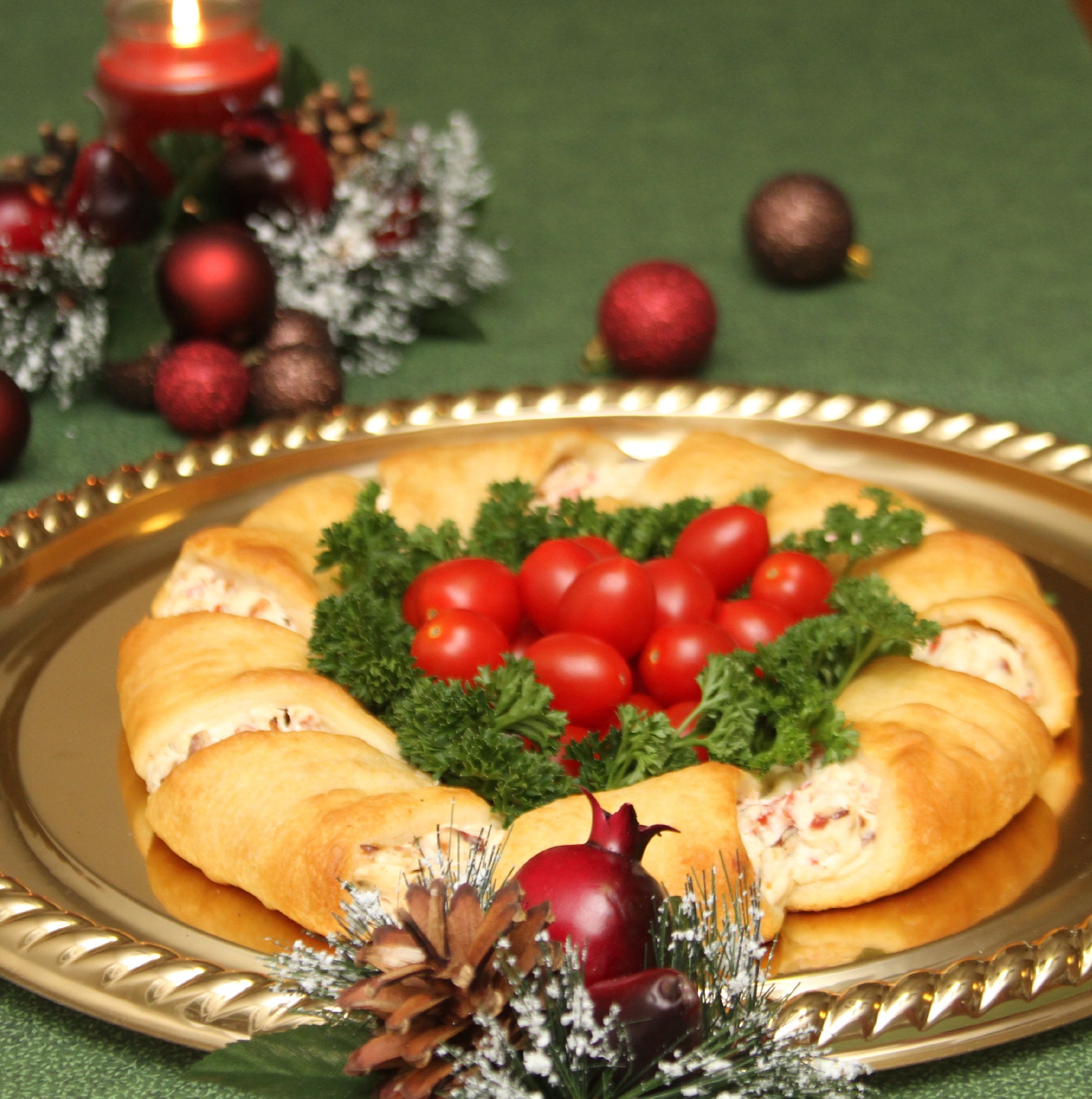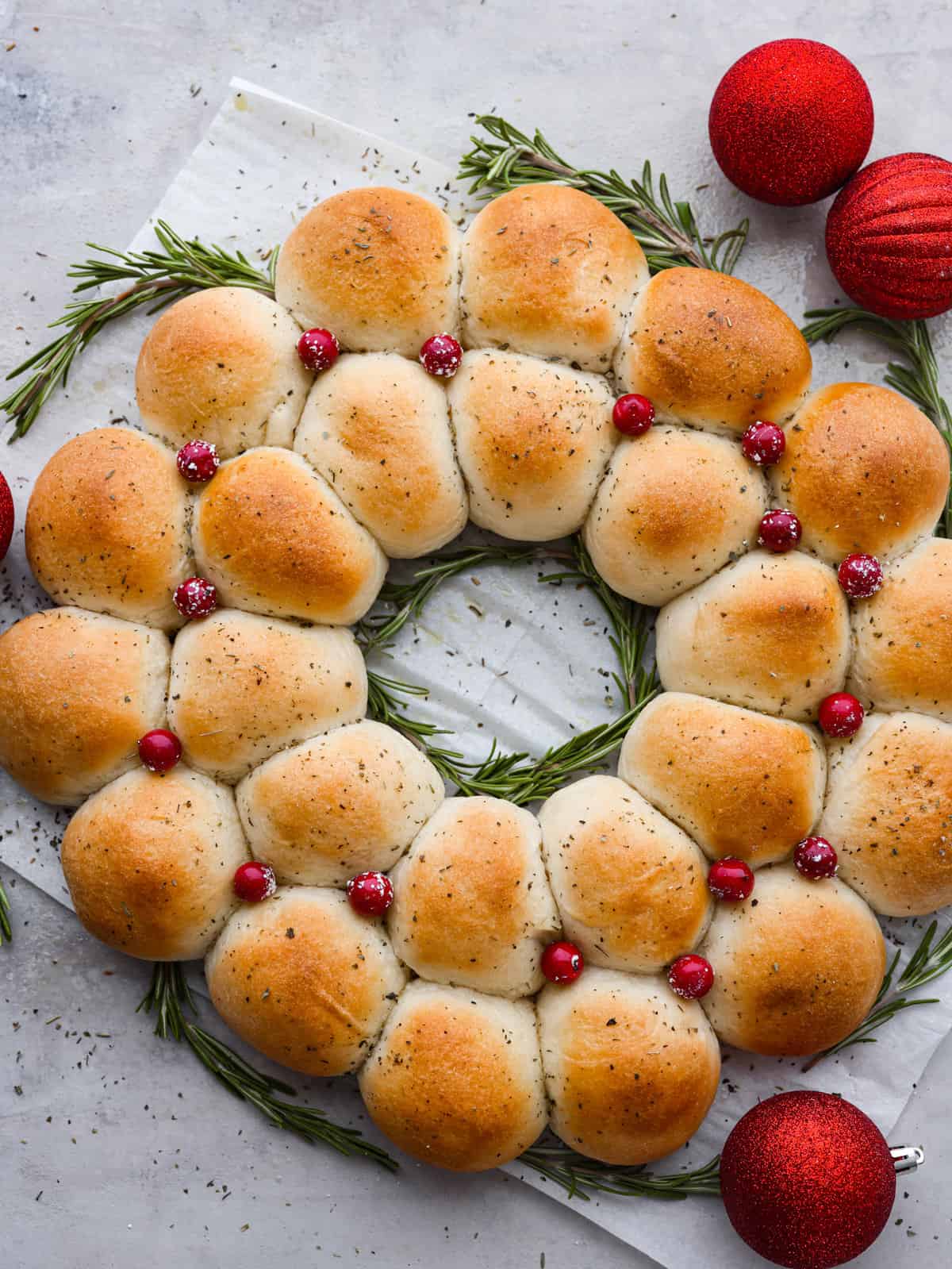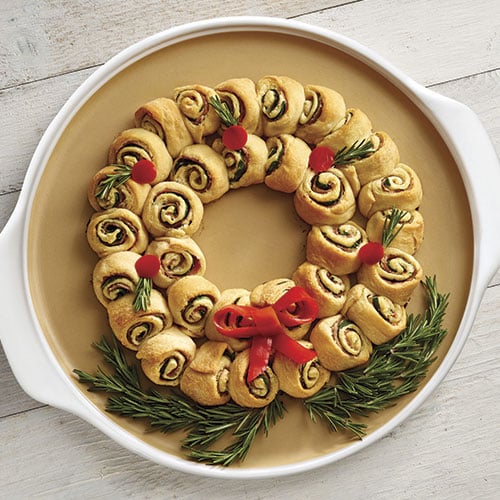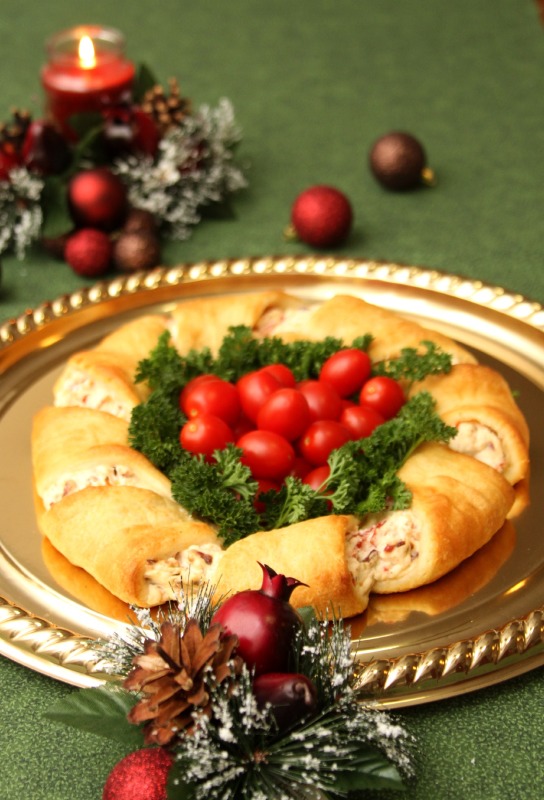A Festive Feast: Exploring The Art And Tradition Of Christmas Wreath Rolls
A Festive Feast: Exploring the Art and Tradition of Christmas Wreath Rolls
Related Articles: A Festive Feast: Exploring the Art and Tradition of Christmas Wreath Rolls
Introduction
With great pleasure, we will explore the intriguing topic related to A Festive Feast: Exploring the Art and Tradition of Christmas Wreath Rolls. Let’s weave interesting information and offer fresh perspectives to the readers.
Table of Content
A Festive Feast: Exploring the Art and Tradition of Christmas Wreath Rolls

The holiday season is a time for gathering, celebration, and, of course, delicious food. Among the many festive culinary traditions, Christmas wreath rolls stand out as a visually captivating and delightful treat. These festive pastries, shaped like wreaths, are a staple in many households, offering a delicious and visually appealing addition to holiday tables. This article delves into the fascinating world of Christmas wreath rolls, exploring their origins, variations, preparation, and the significance they hold in holiday celebrations.
A Journey Through Time: The Origins of Christmas Wreath Rolls
The origins of Christmas wreath rolls can be traced back to centuries-old traditions, where the circular shape of the bread symbolized life, continuity, and the cycle of the seasons. In many cultures, wreaths have been associated with celebrations and festivals, often representing good fortune and abundance.
While the exact origins are shrouded in the mists of time, evidence points to the practice of baking wreath-shaped bread in various parts of Europe during the winter solstice. This ancient tradition likely evolved into the modern Christmas wreath rolls, with the addition of festive spices, fruits, and nuts, reflecting the celebratory spirit of the season.
The Many Faces of Christmas Wreath Rolls: Variations and Regional Differences
Christmas wreath rolls, like many culinary traditions, have evolved into a diverse array of variations, reflecting regional preferences and cultural influences.
-
European Traditions: In Germany, "Weihnachtskranz" (Christmas wreath) is a popular sweet bread often adorned with candied fruits and nuts. In Scandinavia, "Julekake" (Christmas cake) features a rich, buttery dough filled with almond paste and topped with icing. In Eastern Europe, "Vianočný veniec" (Christmas wreath) is a savory bread often filled with poppy seeds, cheese, and savory fillings.
-
American Innovations: In the United States, Christmas wreath rolls are often shaped into a classic wreath form and filled with sweet or savory ingredients. Popular fillings include cinnamon rolls, fruit preserves, cream cheese, and even savory meats.
-
Beyond the Traditional: Modern interpretations of Christmas wreath rolls showcase innovative flavors and textures. Some bakers incorporate chocolate, coffee, or even pumpkin spice into the dough. Others experiment with various toppings, including glazes, sprinkles, and even edible glitter.
Crafting Festive Delights: A Glimpse into the Preparation of Christmas Wreath Rolls
The process of making Christmas wreath rolls is a delightful culinary journey that combines tradition with creativity. While specific recipes may vary, the general steps involve:
-
Dough Preparation: The first step involves preparing a yeast-based dough, often enriched with butter, eggs, and milk for a rich and flavorful base.
-
Shaping the Wreath: The dough is then carefully rolled out and shaped into a circular form, resembling a wreath.
-
Filling the Center: The center of the wreath is filled with a variety of ingredients, depending on the desired flavor profile. Sweet fillings may include cinnamon rolls, fruit preserves, or cream cheese. Savory fillings can include meats, cheeses, or vegetables.
-
Baking and Decorating: The wreath is then baked until golden brown and fragrant. Once cooled, it is often decorated with festive toppings like icing, sprinkles, or candied fruits.
The Significance of Christmas Wreath Rolls in Holiday Celebrations
Christmas wreath rolls hold a special significance in holiday celebrations, transcending their role as a simple dessert. Their presence symbolizes the spirit of the season, embodying the themes of togetherness, generosity, and the joy of sharing.
-
A Symbol of Unity: The circular shape of the wreath represents unity and the interconnectedness of family and friends. Sharing a Christmas wreath roll with loved ones reinforces the bonds that tie them together.
-
A Celebration of Abundance: The rich ingredients and festive decorations symbolize abundance and prosperity, reflecting the spirit of giving and gratitude that defines the holiday season.
-
A Culinary Tradition: Baking Christmas wreath rolls is often a family tradition, passed down through generations. The act of preparing these festive pastries strengthens family bonds and creates cherished memories.
FAQs: Unraveling the Mysteries of Christmas Wreath Rolls
1. Are Christmas wreath rolls always sweet?
No, Christmas wreath rolls can be both sweet and savory. While sweet fillings are more common, savory variations featuring meats, cheeses, and vegetables are also enjoyed.
2. What are some popular fillings for Christmas wreath rolls?
Popular fillings include cinnamon rolls, fruit preserves, cream cheese, nuts, chocolate chips, savory meats, cheeses, and vegetables.
3. Can I make my own Christmas wreath rolls?
Absolutely! There are numerous recipes available online and in cookbooks that provide step-by-step instructions for making your own Christmas wreath rolls.
4. How do I store Christmas wreath rolls?
Christmas wreath rolls are best stored at room temperature for up to three days. They can also be frozen for up to two months.
5. What are some creative ways to decorate Christmas wreath rolls?
Get creative with festive toppings! Use icing, sprinkles, candied fruits, chocolate chips, nuts, or even edible glitter to decorate your Christmas wreath rolls.
Tips for Baking Perfect Christmas Wreath Rolls
- Use high-quality ingredients: The taste of your Christmas wreath rolls will be enhanced by using fresh, high-quality ingredients.
- Proof the dough properly: Allowing the dough to rise properly will ensure a light and airy texture.
- Don’t overbake: Overbaking can result in a dry and crumbly wreath roll. Check for doneness by inserting a toothpick into the center; it should come out clean.
- Cool completely before decorating: Allow the wreath roll to cool completely before adding any toppings to prevent them from melting or becoming soggy.
- Get creative with decorations: Don’t be afraid to experiment with different toppings and decorations to make your Christmas wreath rolls truly unique.
Conclusion: A Festive Tradition Enduring Through Time
Christmas wreath rolls are more than just a delicious treat; they are a testament to the enduring power of tradition and the spirit of the holiday season. From their ancient origins to their modern variations, these festive pastries continue to bring joy and warmth to families and friends gathered around the table. As you savor the flavors and appreciate the artistry of these culinary creations, remember the rich history and the enduring significance they hold in the tapestry of holiday celebrations.







Closure
Thus, we hope this article has provided valuable insights into A Festive Feast: Exploring the Art and Tradition of Christmas Wreath Rolls. We hope you find this article informative and beneficial. See you in our next article!
Leave a Reply